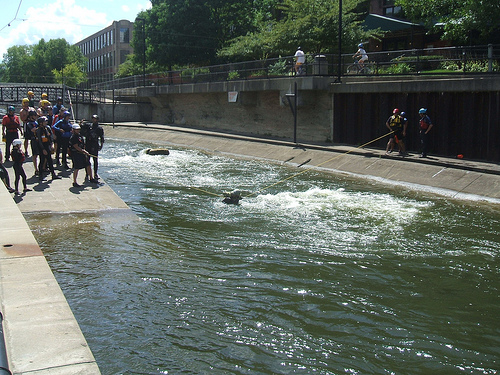 A stabilization line crosses the stream or chute and allows the victim to rest their chest against it - keeping the head up. This line buys lots of rescue time. Water currents are often quite strong and too difficult to sustain an upright position even with a paddle to prop yourself up with. A stabilization line is far safer than a cinch line.
A stabilization line crosses the stream or chute and allows the victim to rest their chest against it - keeping the head up. This line buys lots of rescue time. Water currents are often quite strong and too difficult to sustain an upright position even with a paddle to prop yourself up with. A stabilization line is far safer than a cinch line.
When setting a stabilization line, most rescuers forget how powerful water is and run the line straight across the river. This establishes a strong vector pull which is very hard to maintain. Once the line is in place, both sides should walk back upstream to eliminate the vector pull. You can also use trees to carry the load via a tensionless hitch. Just wrap the rope a couple of times around the tree. Friction will do the heavy lifting and it is still very easy to pay out line if desired.
